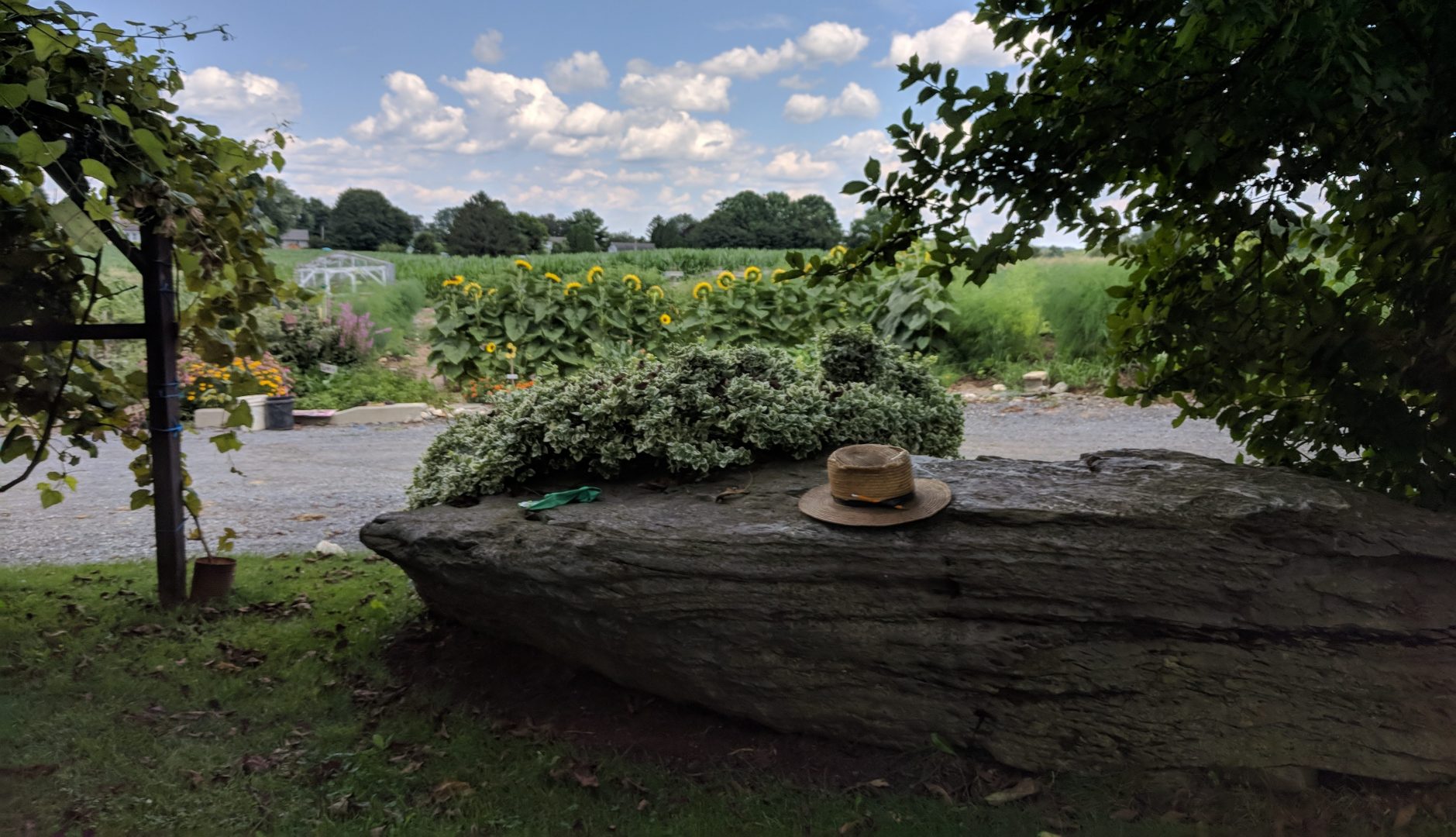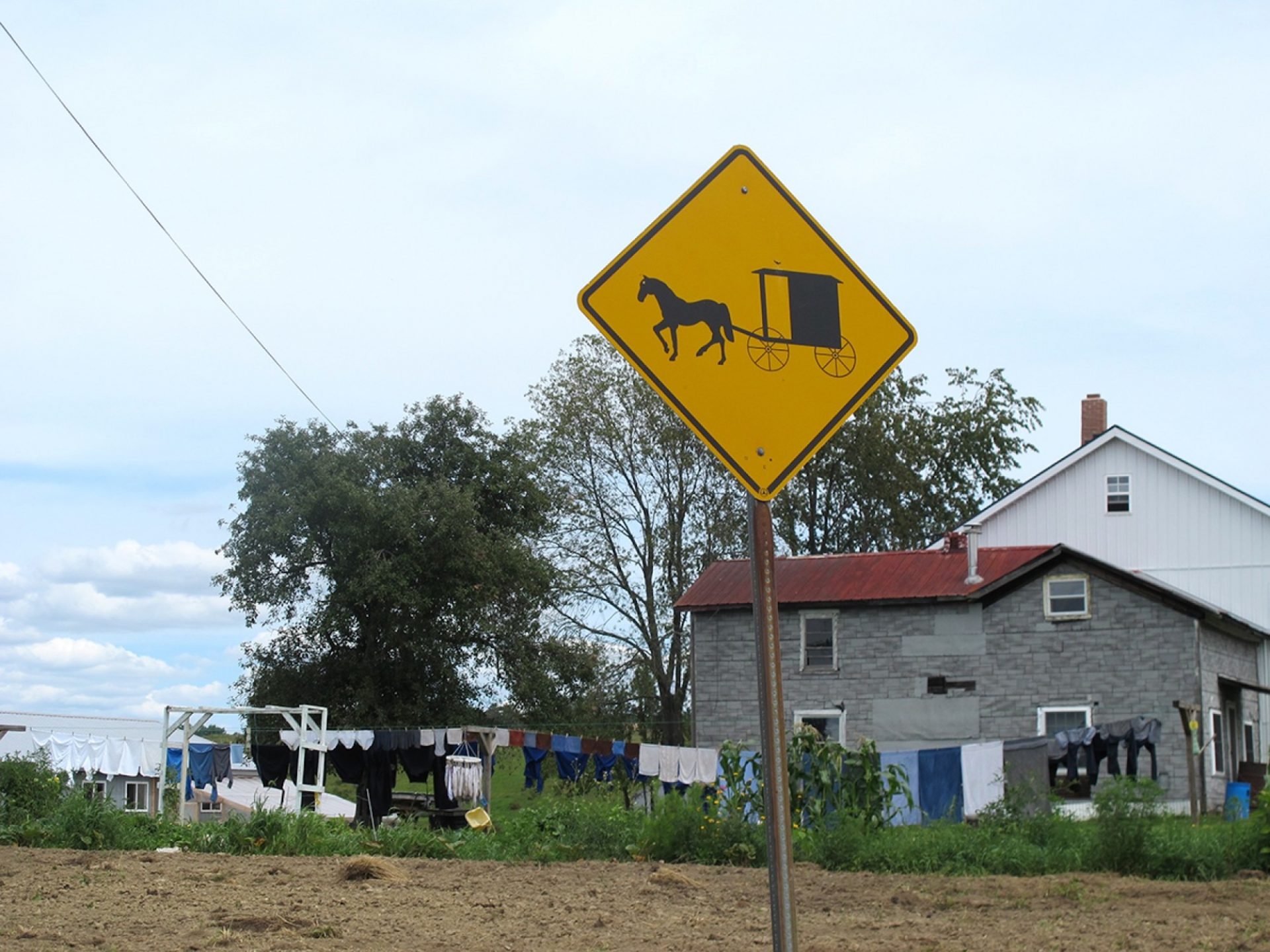
An Amish man’s hat rests on a rock outside a farmhouse in Leacock Township, Lancaster County, on July 24, 2019.
Rachel McDevitt / WITF

An Amish man’s hat rests on a rock outside a farmhouse in Leacock Township, Lancaster County, on July 24, 2019.
Rachel McDevitt / WITF

Rachel McDevitt / WITF
An Amish man’s hat rests on a rock outside a farmhouse in Leacock Township, Lancaster County, on July 24, 2019.
(Pittsburgh) — As the vaccination rollout continues, Pennsylvania health care providers are turning their attention to harder to reach populations, including Amish and conservative Mennonite communities living in more rural parts of the state.
Health officials do not track the religious affiliations of people who choose to get vaccinated, so it is unclear exactly how many Amish people have received a COVID-19 vaccine.
Providers in Lancaster County, which is home to one of the largest Amish communities, worry that many may not be able to sign up for a vaccine appointment using a computer or cellphone. To that end, health care providers are adjusting their communication strategies and working with church groups to encourage people to get vaccinated.
“We, as a healthcare provider, have the vaccine, we have the ability to administer the vaccine,” said Alice Yoder, executive director of community health for Penn Medicine at Lancaster General Health. “But it’s the relationship that the faith-based communities have with their members and the community overall that gets the people to the pop-up clinic.”

Erika Beras / WESA
Pennsylvania health care providers are adjusting their vaccine outreach strategies to target those living in more rural parts of the state, including Amish and conservative Mennonite communities.
Other efforts include buying ads in newspapers widely read by the Amish community. Yoder, speaking with WESA’s The Confluence, said that this outreach is vital.
“We’ve targeted materials to organizations and newspapers that the Amish particularly read so that we can get that message out,” she said.
“There are some, I’m sure, that read the Wall Street Journal. But that’s not by far the typical person in the Amish community. So, really using their networks and their vehicles is the best way to communicate the messaging that needs to get out there.”
Yoder said that while she remains concerned about lower vaccination rates among Amish and Mennonite people, she believes the community-based approach is the most effective way to reduce vaccine hesitancy and encourage people to get a vaccine.
“We need to be able to do as much as we can that’s within our control,” said Yoder. “And that would be putting out truthful information and the facts to the plain community, and also being available, reducing transportation issues, and having the vaccine available for those that are willing to get vaccinated.”

Sometimes, your mornings are just too busy to catch the news beyond a headline or two. Don’t worry. The Morning Agenda has got your back. Each weekday morning, host Tim Lambert will keep you informed, amused, enlightened and up-to-date on what’s happening in central Pennsylvania and the rest of this great commonwealth.
The days of journalism’s one-way street of simply producing stories for the public have long been over. Now, it’s time to find better ways to interact with you and ensure we meet your high standards of what a credible media organization should be.